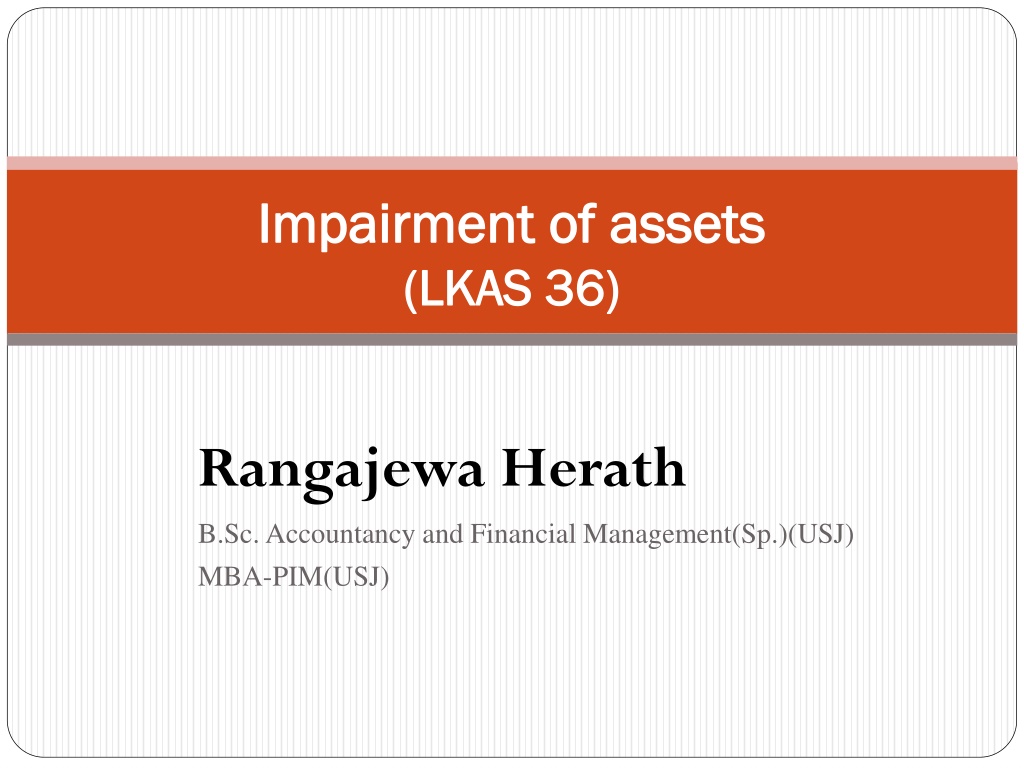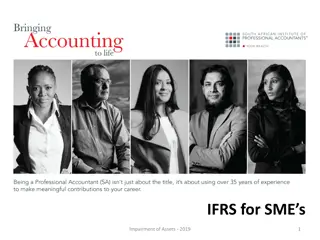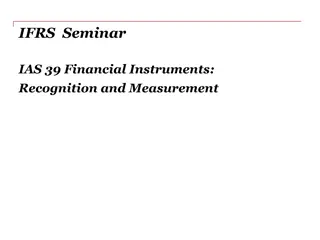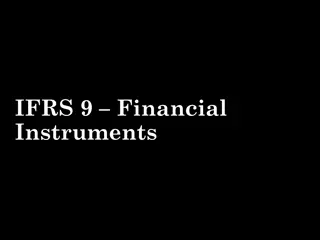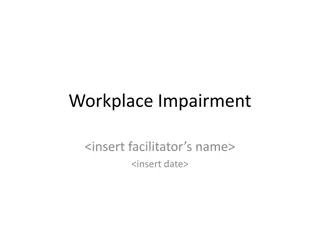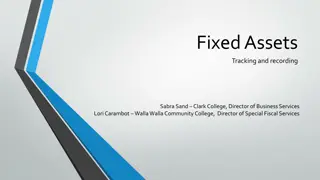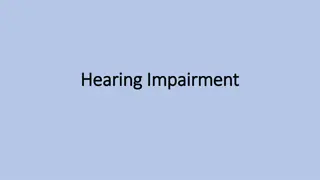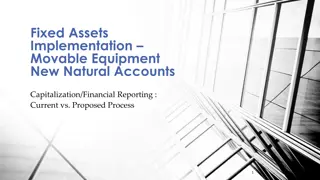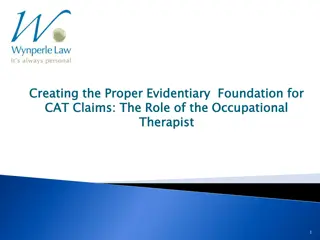Understanding Impairment of Assets in Financial Management
Entities must periodically test for impairment to ensure assets are not overstated. An impairment loss occurs when an asset's carrying amount exceeds its recoverable amount. Assets like inventories and deferred tax assets may require testing. Learn when to undertake impairment tests, key indicators, and the methods for testing individual assets against impairment thresholds like fair value less costs of disposal and value in use.
Download Presentation

Please find below an Image/Link to download the presentation.
The content on the website is provided AS IS for your information and personal use only. It may not be sold, licensed, or shared on other websites without obtaining consent from the author. Download presentation by click this link. If you encounter any issues during the download, it is possible that the publisher has removed the file from their server.
E N D
Presentation Transcript
Impairment of assets Impairment of assets (LKAS 36) (LKAS 36) Rangajewa Herath B.Sc. Accountancy and Financial Management(Sp.)(USJ) MBA-PIM(USJ)
Introduction Entities are required to conduct impairment tests to ensure their assets are not overstated An impairment loss results when an asset s carrying amount (CA) is more than its recoverable amount (RA) Entities are required to conduct impairment tests to ensure their assets are not overstated Recovery can be from disposal of the asset OR from future use of the asset (including is ultimate disposal) Not all assets require this test. include: Inventories Deferred tax assets Assets held for resale Notable exclusions
When to undertake an impairment test For most assets it is not necessary to conduct impairment tests every year Assets must be tested for impairment when there is an indication (or evidence) of impairment The following assets must be tested annually for impairment: Intangibles with indefinite useful lives Intangibles not yet available for use Goodwill acquired in a business combination
Indicators Indicators are classified into two groups internal and external External sources Decline advancements Adverse changes in entity s environment/ market e.g. a competitor may have patented a new product, resulting in a permanent fall in market share of the entity Increases in interest rates affects the PV of future cash flows Market capitalisation in market value e.g. technological
Indicators cont...... Internal sources Obsolescence or physical damage Change in asset use has the asset become idle? Economic performance of the asset worse than expected? Cash outflows are higher than expected e.g. maintenance costs Cash inflows are lower than expected
Impairment test for an individual asset There are two possible amounts against which the carrying amount can be tested for impairment Fair value less costs of disposal (FV-CD) Value in use (VIU) Not always necessary to measure both amounts when testing for impairment If either one of these two amounts is higher than the carrying amount, the asset is not impaired When FV-CD > CA there is no need to calculate the VIU of the asset
Impairment test for an individual asset Fair value less costs to sell Fair value An exit price Measured using a relevant valuation technique Using observable or unobservable inputs (the value hierarchy ) Costs of disposal include: Legal fees Stamp duty / transaction taxes Costs of removing the asset Direct incremental costs to bring the asset to a saleable condition
Impairment test for an individual asset Value in use The present value of future cash flows expected to be derived from an asset or cash-generating unit Five elements when calculating value in use a) Estimate of future cash flows b) Expectations about possible variations in amount or timing of future cash flows c) Time value of money d) Price for bearing uncertainty inherent in asset e) Other factors such as illiquidity
Impairment test for an individual asset Recognition and measurement of an impairment loss for an individual asset An impairment loss is recognised where CA > RA Where the asset is accounted for under the cost model the impairment loss is recognised immediately in profit or loss. Where the asset is accounted for under the revaluation model the impairment loss is treated as a revaluation decrease. Any subsequent depreciation/amortisation is based on the new recoverable amount.
Illustration 1 The cost and accumulated deprecation of a plant as at 31.03.2017 was Rs. 5 million and Rs.1.5 million respectively. The fire value less cost of disposal and value in use of this plant on this date was Rs. 3.2 million and Rs.3.3 respectively. Required: Calculate the impairment loss Prepare the necessary ledger accounts Provide the extracts of the financial statements
Illustration 2 ABC PLC purchased a plant for Rs.8 million on 01.04.2013 and estimated a useful life of 8 years. The fire value less cost of disposal and value in use of this plant on 31.03.2016 were Rs. 4.4 million and Rs.4.5 respectively. Required: Calculate the impairment loss Prepare the necessary ledger accounts Provide the extracts of the financial statements for year 2015/16 and 2016/17.
Cash-generating units (CGUs) excluding goodwill Our focus has been on individual assets, where both the FV-CD and the VIU could be measured FV-CD can be determined for most assets. But many individual assets do not generate cash inflows in their own right; e.g. a machine in a factory works in conjunction with the rest of the assets in the factory When it is not possible to determine the RA for an individual asset, the entity should Determine the RA of the Cash Generating Unit (CGU) to which the asset belongs The impairment test is applied to the CGU, not the individual asset A CGU is defined as the smallest identifiable group of assets that generates cash flows that are largely independent of the cash inflows from other assets or groups of assets
CGUs excluding goodwill Identifying a CGU Key to identification what is the smallest group of assets? Consider: How does management monitor the entity s operations? How does management makes decisions about continuing or disposing of the entity s assets and operations? Is there an active market for the output of a group of assets? If the output is used internally, can it be sold outside the entity? CGUs must be identified consistently from period to period LKAS 36 allows a segment to be used as a CGU Where the segment equates to the smallest group of assets generating independent cash flows Segment determined in accordance with AASB 8 Operating Segments
CGUs excluding goodwill Impairment losses and CGUs An impairment loss arises when the CA of the CGU assets > RA Determining the impairment loss Principles for determining RA are the same for CGUs as for individual assets Accounting for the impairment loss The loss is allocated to each asset in the CGU on a pro-rata basis Based on the CA of each asset / the total CA amount of the CGU assets Losses are accounted for in the same way as for individual assets discussed earlier The CA of an individual asset cannot be reduced below the highest of: FV-CD (if determinable); VIU (if determinable); or Zero
Illustration 3 A Ltd has identified an impairment loss of Rs.12,000 on one of its CGUs The CGU consists of the following assets (stated at current carrying amounts): Buildings 500,000 Equipment 300,000 Land 250,000 Fittings 150,000 The FV-CD of the building is Rs.497,000 Required: Calculate the allocation of impairment loss against all assets in the CGU
Cash Generating units and goodwill The asset goodwill can only arise in a business combination It cannot be internally generated, revealed or amortised It is subject to impairment testing Goodwill is a residual balance, consisting of assets that cannot be individually identified or separately recognised Therefore it is not possible to determine a FV-CD for goodwill, or to identify cash flows relating specifically to goodwill When goodwill is recognised in a business combination it must be allocated to one or more CGUs (similar to corporate assets) LKAS 36 requires that goodwill be allocated to the lowest level at which management monitors the goodwill Goodwill can only be tested for impairment at the CGU level
Illustration 4 Illustration 4 A Ltd has identified an impairment loss of $300,000 on one of its CGUs The CGU consists of the following assets (stated at current carrying amounts): Buildings 500,000 Equipment 300,000 Land 250,000 Goodwill 150,000 Required: Calculate the allocation of impairment loss against all assets in the CGU.
Reversal of an impairment loss Recognised losses are reassessed annually Are there indicators the previous loss does not exist or has decreased? Indicators are the same as those used for initially recognising a loss; e.g. Improvement in the economy or product markets Interest rates have decreased A review of the indicators might result in: Changes to depreciation parameters (e.g. useful life) instead of a reversal IF there is a change in the estimates, a reversal of impairment is possible Ability to recognise a reversal of an impairment loss and the accounting for that reversal is dependent on whether the reversal relates to an individual asset, a CGU, or goodwill
Reversal of an impairment loss Goodwill LKAS 36 An impairment loss recognised for goodwill is not to be reversed in a later period Like individual assets, recognised losses in relation to a CGU are reassessed annually Are there indicators ? If reassessed estimates indicate RA of a CGU is > CA, impairment reversals are required Except for goodwill
